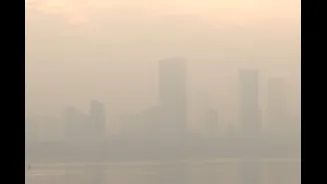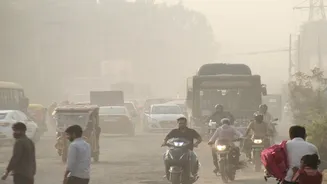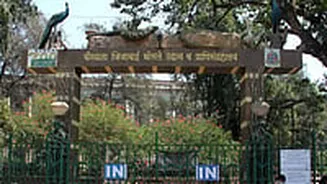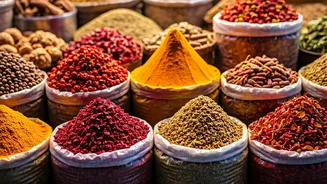Residents of Mumbai woke up to a hazy morning on Friday as a dense blanket of smog enveloped the city, obscuring its famous skyline. Several parts of the city, including Bandra-Kurla Complex (BKC), were
engulfed in haze, signaling a sharp decline in air quality after weeks of relative improvement.
Visibility dropped significantly in the early hours due to the smog, though skies are expected to remain clear through the day, according to the India Meteorological Department (IMD). The city’s daytime temperature is likely to hover around 32°C degrees Celsius, with a minimum of 20 degrees Celsius, offering otherwise pleasant November weather.
The sudden deterioration follows a short spell of clean air earlier in the week, brought on by heavy rainfall that temporarily washed away pollutants. However, this respite proved fleeting as pollution levels spiked again within days.
Fresh data from AQI.in on Friday morning showed Mumbai’s overall Air Quality Index (AQI) at 263, placing it in the “unhealthy” category — a steep drop from the moderate levels recorded earlier. Residents across several areas reported thick haze and poor visibility even after sunrise.
#WATCH | Maharashtra: A layer of smog lingers in the air around Bandra Kurla Complex in Mumbai this morning. CPCB (Central Pollution Control Board) claims that AQI (Air Quality Index) around the area is 222, categorised as ‘Poor’. pic.twitter.com/7xFuYfa9lX
— ANI (@ANI) November 7, 2025
According to data from CPCB (Central Pollution Control Board), the AQI around the Bandra Kurla Complex area was reported at 222, categorised as ‘poor’.
Among the city’s monitoring stations, Parel-Bhoiwada recorded the highest AQI at 320, followed by Deonar (319) and Colaba (318). Other localities such as Vile Parle West (313) and BKC (310) also registered “severe” pollution levels.
Relatively better air was observed in parts of the western suburbs, with Kandivali East reporting an AQI of 93 (moderate). Areas like Mankhurd (140), Borivali East (163), Bhandup West (173), and Malad West (173) remained in the “poor” range.
As per AQI.in’s classification, an index between 0–50 is “Good”, 51–100 “Moderate”, 101–150 “Poor, 151–200 “Unhealthy, and anything above “200” is considered “Severe” or “Hazardous”.
Why Is Mumbai Witnessing Bad Air Days?
Since the monsoon’s withdrawal on October 10, Mumbai’s air quality has steadily worsened. Until October 9, the city’s AQI remained in double digits, but since then, it has consistently crossed into triple figures. On Wednesday, the CPCB reported Mumbai’s overall AQI at 139 (moderate), though several areas have recorded much higher pollution levels.
Localities like Bandra-Kurla Complex (BKC) and Deonar registered AQIs of 221 and 235, both in the “poor” category. Between October 10 and 15, BKC saw poor air quality for two days, while Deonar experienced it for three consecutive days.
Experts attribute this deterioration to the La Niña phenomenon, which cools surface waters in the equatorial Pacific and alters atmospheric circulation. The resulting weakened wind patterns slow the dispersion of pollutants, trapping them over coastal cities like Mumbai and worsening air quality.
















